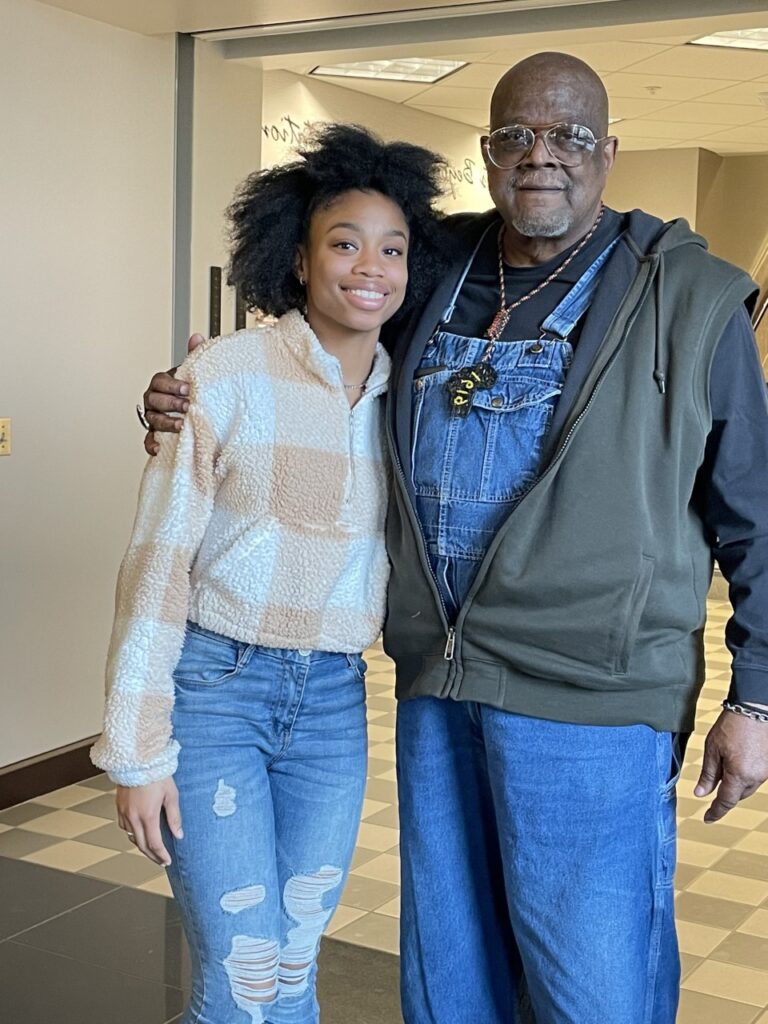Black History in South Dakota

Many influential black historical figures are lost in history. History books limit our knowledge of black people who have aided and affected America’s greatness long before Martin Luther King Jr. marched and Rosa Parks did not stand up. I visited the Black History Museum in the Pavilion. The museum was very helpful and gave me a lot of information on a few historical figures that influenced South Dakota.

I would like to start off by introducing Sara Campbell. Campbell was born on July 10, 1823, in Kentucky. She was promised her freedom after the death of her owners, but the promise was not granted. Instead, she was sold to Henry Chouteau. Chouteau sent Sarah to work as a cook on a steamboat, where she became the first black woman employed in South Dakota. After a few years, she filed a lawsuit against her owner and won her freedom at the age of 13! She continued to work on steamboats where she met and married her husband.
Campbell moved to Bismarck and became the first black woman to own land in South Dakota. According to blackhillsvisitor.com, Campbell who became known as Aunt Sally, owned multiple lots of land. She ran a laundry, a private club, and served as a midwife. In 1874, Campbell accompanied Colonel George Armstrong Custer on his Black Hills Expedition to South Dakota.
Aunt Sally founded the Custer Park Mining Company with 20 other people. She filed the claim “No. 7 below Discovery” which was the first claimed filed by a woman in Black Hills. She was able to acquire a lot of silver from her mine she named Alice Lode. She eventually moved to a ranch in Galena and passed away on April 10, 1888, at the age of 64. Until the day she died, she was an active member in her community and loved by all.

Another influential African American South Dakotan was Cleveland Leigh Abbott. Cleveland Abbott was born on December 9, 1892, in Yankton. Abbott was the first black individual to letter in high school sports in South Dakota. He lettered in four sports: track and field, basketball, football and baseball. After high school, he attended South Dakota State University and continued to make history by becoming the first black individual to letter in any sport there. Because of his accomplishments, there is a hall dedicated to Abbott.
After he left SDSU, he became the first African American USATF, USA Track and Field, board member. Booker T. Washington, who was the president of Tuskegee University at the time, reached out for Abbott to become the athletic director. A part of his job was to coach the football team. Under his coaching the team had six undefeated seasons, according to blackpast.org. Aside from being the football coach, Abbott was also hired as an agricultural chemist.
During his 32-year long career at Tuskegee he started the women’s track and field team in 1937. Six of his athletes went on to compete in the Olympics for the U.S. He also had the chance to coach Margaret Peters and Roumania Peters who were deemed tennis stars. He passed away in Tuskegee on April 14, 1955.

Lastly, Oscar Micheaux, a film director and novelist who greatly affected America’s film industry. He was born in Metropolis, Illinois on January 2, 1884. According to Sioux City History, Micheaux bought 160 acres of land in Gregory, South Dakota and moved there in 1905. From his experiences there, he wrote The Conquest in 1912. He went to Sioux City in search of publishers and published two more books.
Publishing books was not enough, he wanted to make movies based on his novels. The first movie he directed and filmed was Homesteader which he shot near Winner, South Dakota. Homesteader was the first feature length film by a black person, according to Sioux City History. Micheaux wanted capture the reality of life as a black person in his films. Many films during the time poorly portrayed African American lives and Micheaux wanted to expel the stereotypes bestowed on the African American community. By the end of his career, Micheaux had written and directed 86 films. Spike Lee and John Singleton are few filmmakers that claim Micheaux as someone who greatly influenced them. Micheaux passed away on March 25,1951.
Sarah Campbell, Cleveland Abbott, and Oscar Micheaux are few of many African American influential historical figures that are not taught in history books. Many in the black community do not know about the amazing things that our ancestors accomplished for us to have the opportunities that are available to us now. “Black America has come a long way in the last 65 years,” Porter Williams, the museum’s founder says. Many accomplishments are lost in history, and I am blessed to have been able to learn about the amazing lives of Campbell, Abbott and Micheaux.


Besides Williams, I also spoke with Julian Beaudion, who currently oversees the museum and is also running for city council; they both gave me incredible information on many other African Americans that influenced South Dakota. Williams sculpted all the sculptures that are in the museum and has a few sculptures around Sioux Falls. When you visit the museum, you will see the cleats that Abbott wore as well as an exhibit on Dr. Martin Luther King Jr. and his visit to Sioux Falls.
Many African Americans in Sioux Falls are grateful for this museum because without it, most would not have knowledge of these historical figures. Both Williams and Beaudion have impacted many in Sioux Falls through the museum. I encourage you to visit the museum, it could be an opportunity to learn something new!




